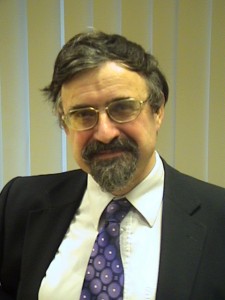 As Medical Propellants Business Expert at Mexichem over the last 20+ years, Tim Noakes has developed unique access to and insight into pressurized metered dose inhaler manufacturing around the world. He gives OINDPnews.com his perspective on how the industry has been evolving, especially in the developing world.
As Medical Propellants Business Expert at Mexichem over the last 20+ years, Tim Noakes has developed unique access to and insight into pressurized metered dose inhaler manufacturing around the world. He gives OINDPnews.com his perspective on how the industry has been evolving, especially in the developing world.
Q:What has been the most significant change in MDI manufacturing worldwide over the past 20 years?
A: The regulatory driven transition from CFC- to HFA-propelled MDIs mandated by the Montreal Protocol has shaken up the somnolent world of respiratory medication, very much to the benefit of the patient. Like a large rock dropped into a pond, the waves generated have fanned out, swamping some of the traditional, but perhaps crude and outdated, techniques of MDI manufacture, leading to higher standards, and safer and more efficacious products, first in Europe, then in the US and the rest of the developed world, and now finally in the developing world.
Q: What are MDI manufacturing facilities like in the developing world today?
A: Well, one can see a whole range of standards. In the case of many companies – those setting out to manufacture to modern standards – it is often really hard to tell whether one is in the USA, Europe, India, Bangladesh or South America once you are inside a filling suite. Filling equipment is sourced from the same suppliers used in the rest of the world, and very similar formulations are produced. The standards are what can only be described as international and underline the changing picture of world MDI manufacture.
Truly, a number of these developing world manufacturers can take great pride in the standards upheld in their new MDI filling facilities. In many cases the manufacturer has installed considerable excess capacity, and is now eying the export market – including the developed world market – with increasing interest.
Most of the developing world manufacturers installed HFA filling equipment later than did manufacturers in the developed world, which is in some ways a major advantage as they have benefited from all of the prior experience gained. Of course, growing adherence to International Conference on Harmonisation (ICH) GMP Guidelines also helps enormously.
Q: What were facilities like prior to the switchover from CFCs to HFA?
A: MDI manufacturing started in the developed world in the 1960s and as far back as the 1980s in some developing countries. Manufacturing of CFC-propelled inhalers allowed for the use of much simpler technology than today’s sophisticated HFA-propelled MDIs, so it was easier to get into the business, and practices in both the developed and developing world were sometimes quite surprising when viewed with the wisdom of hindsight.
I knew of one MDI manufacturer in the early 1990s that ordered 204 liter drums of CFC11 (trichlrofluoroethane) propellant from supplier in a developed country. The empty drums, some of them missing their bungs, had been stored behind the CFC filling plant at the propellant manufacturer in question. The supplier duly filled the drums with CFC 11, found bungs to seal them all, and shipped them to the MDI manufacturer.
The manufacturer made a big batch of drug suspension and began the filling process. Shortly after the filling line was started, it stopped. An investigation revealed that nothing was coming down the pipe from the suspension mixing vessel because a dead bee blocked the line.
Further investigation revealed several thousand more bees jamming up the pipework. They had nested in an unstoppered drum, and no checking or testing had been done by the CFC supplier or by the user.
In another case, one company managed to unload around 5 tons of CFC 12 onto their car park, making the whole thing look like something from a Hollywood the special effects department. Both of these incidents occurred in first-world countries.


